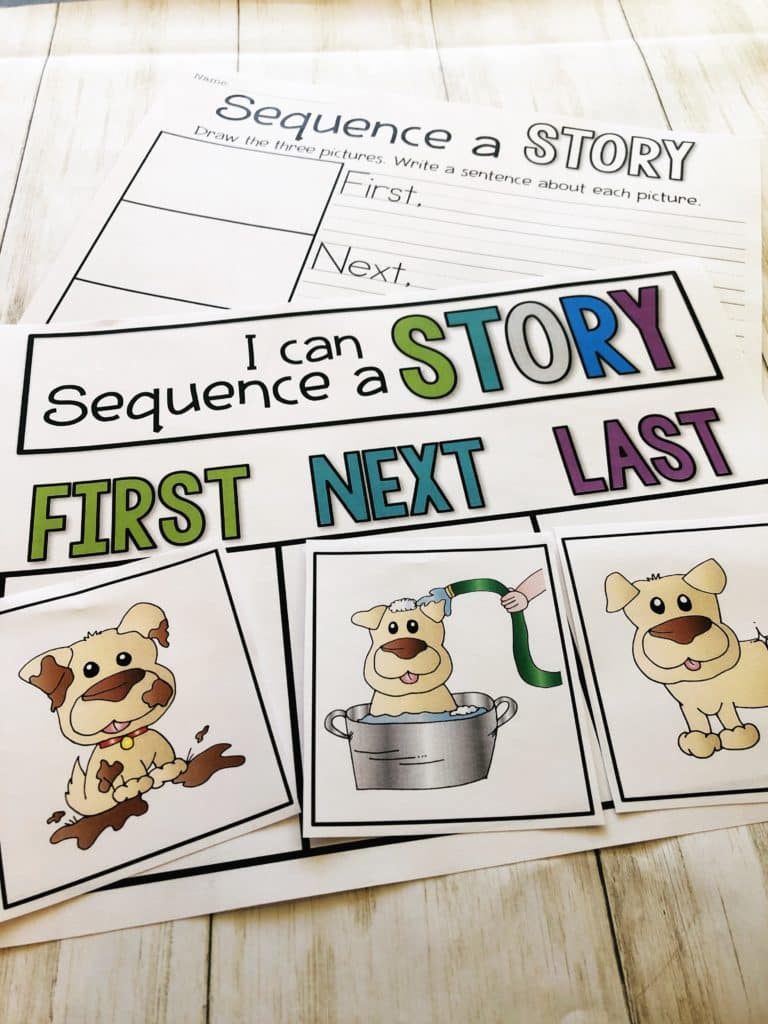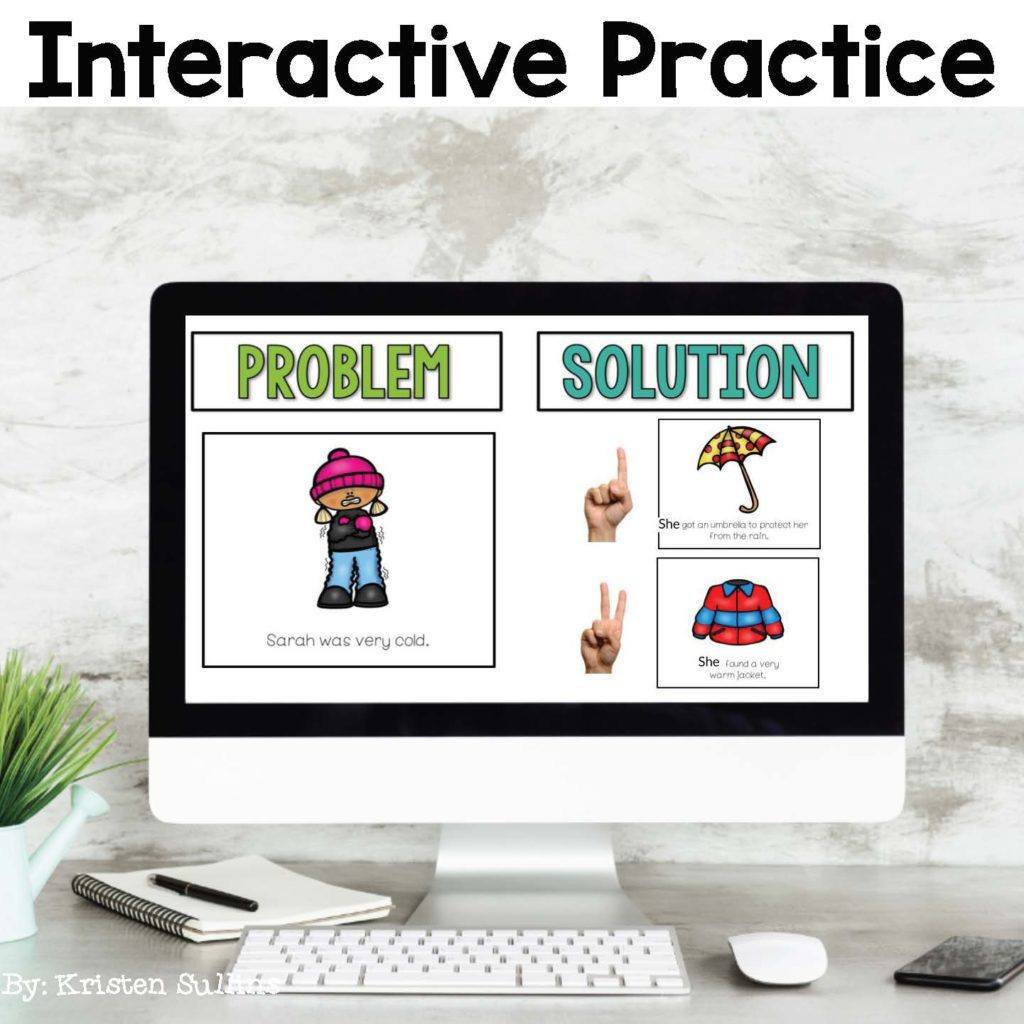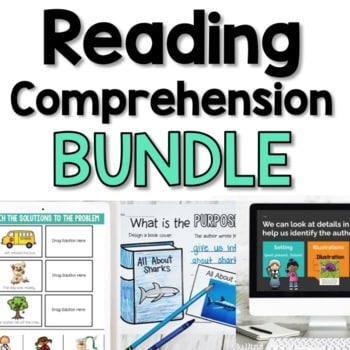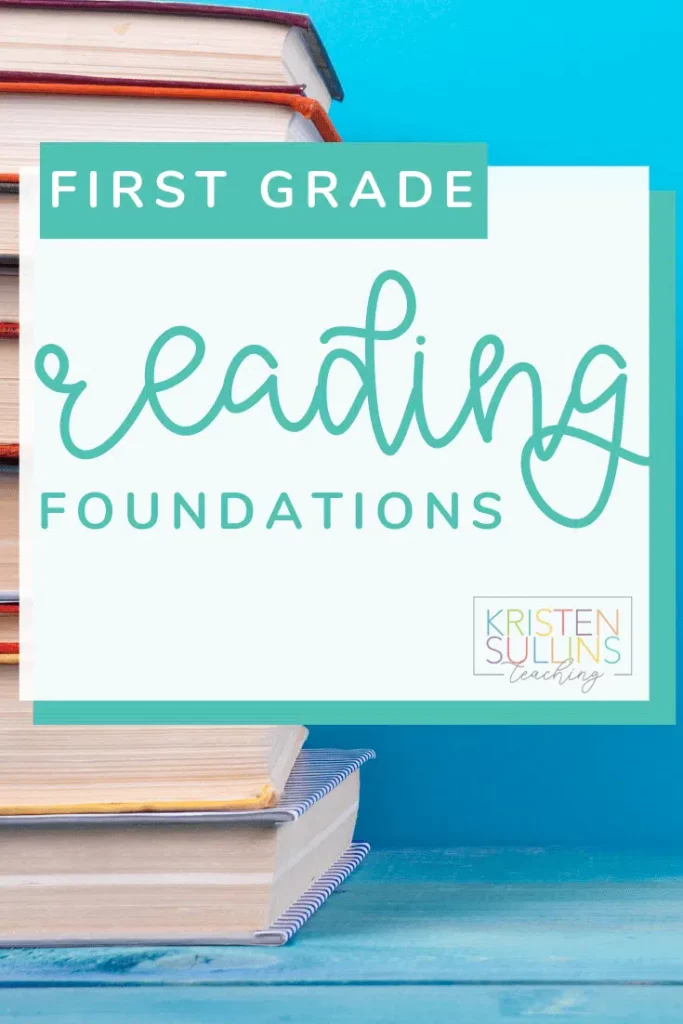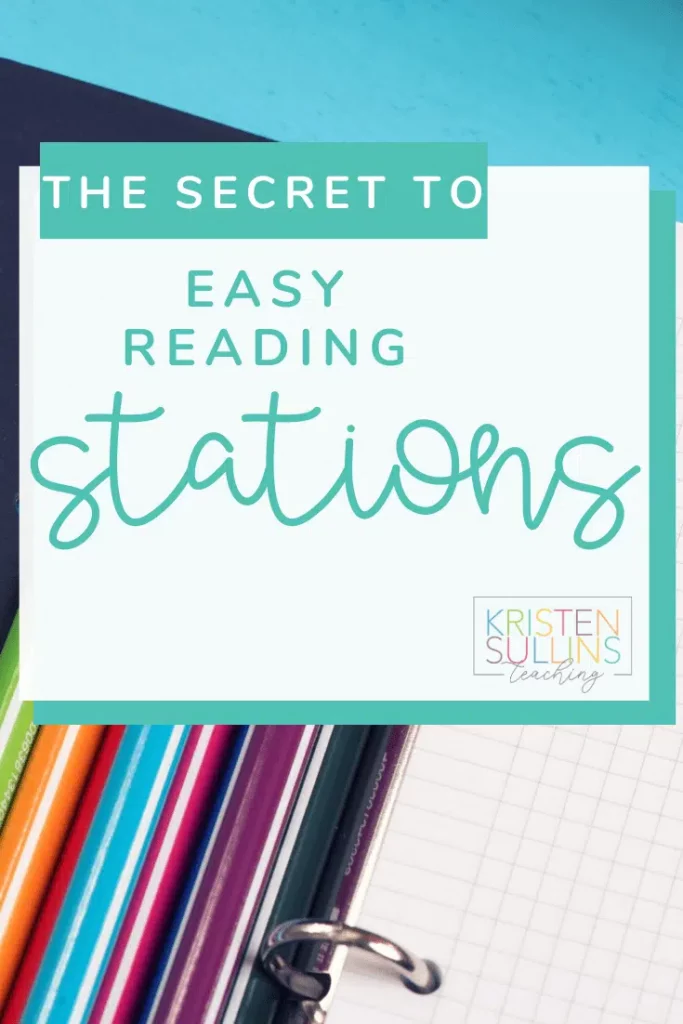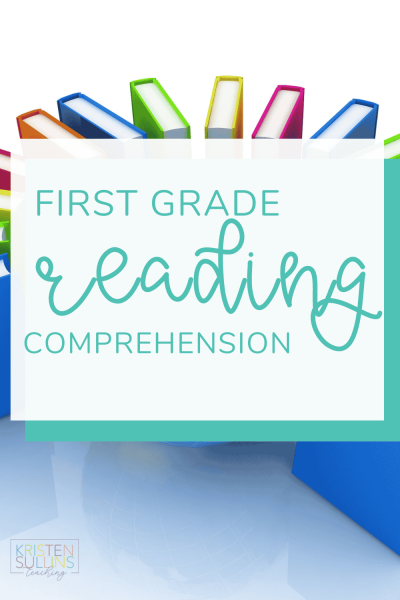Many people call first grade “the reading year”. This is because first grade students are supposed to “grow” through more reading levels than any other grade level!
First grade is a critical year for learning and applying reading comprehension strategies.
But wait, why is reading comprehension important?
A study of 2.8 million students found that students who read 30 or more minutes per day with high comprehension (85 percent or higher) were nearly twice more likely than typical students to achieve the college and career readiness benchmarks for their grade as typical students. (WeAreTeachers).
It’s not enough for students to simply read books, without comprehension they gain no meaning from the books that they are reading.
So, what can we do as teachers to help?
There are ALL sorts of different comprehension lessons and activities that you can plan for first grade. There’s really no one perfect solution, your best bet is to expose students to that comprehension skill in a variety of ways:
- mentor texts
- comprehension focus questions
- sentence stems
- whole group activities
- anchor charts
- non-text activities
- station activities (& creative writing)
- digital activities (videos, Pixar wordless videos, google slides lessons and digital stations)

What is Reading Comprehension in First Grade?
Reading comprehension is like an umbrella term for all of the different skills it takes for a student to understand what they are reading, such as:
- Story Retell
- Problem and Solution
- Main Idea and Detail
- Asking and Answering Questions
- Describe Characters
- Author’s Purpose
- Making Predictions
- Making Connections
- Synthesizing New Information
Reading comprehension is often taught and assessed in the form of comprehension questions. Inside the Fountas & Pinnell reading assessment system (one of the most popular kits for reading assessments) they use three depth levels for their questioning that they refer to as reading goals:
- Within the text (literal)
- Beyond the text (connecting the text to their own experiences)
- About the text (text structure)
Step 1: Understand Your Comprehension Skill
Ok, this sounds overkill, but understanding your teaching standard before you start planning ANY activities.
Why?
You have limited time as a teacher and you want to make sure you are getting your biggest bang for your buck!
You don’t want to be doing comprehension activities or teaching reading lessons that don’t line up with your state standards.
There are three main goals you should understand about your reading standard:
- Identify and research VOCABULARY that students will need to understand what the standard is and how to use it
- Identify and research STRATEGIES for how to teach that comprehension skill
- Set comprehension GOALS… and be specific. If the skill is making an inference, how do you want them to apply that to a text. What kind of comprehension questions should they be able to answer using inferencing?
This is a good time to set a Comprehension Focus Question (CFQ). We will talk about this more later, but you basically decide right now, before planning any lessons or activities on one specific comprehension question that you want your first grade students to be able to answer.
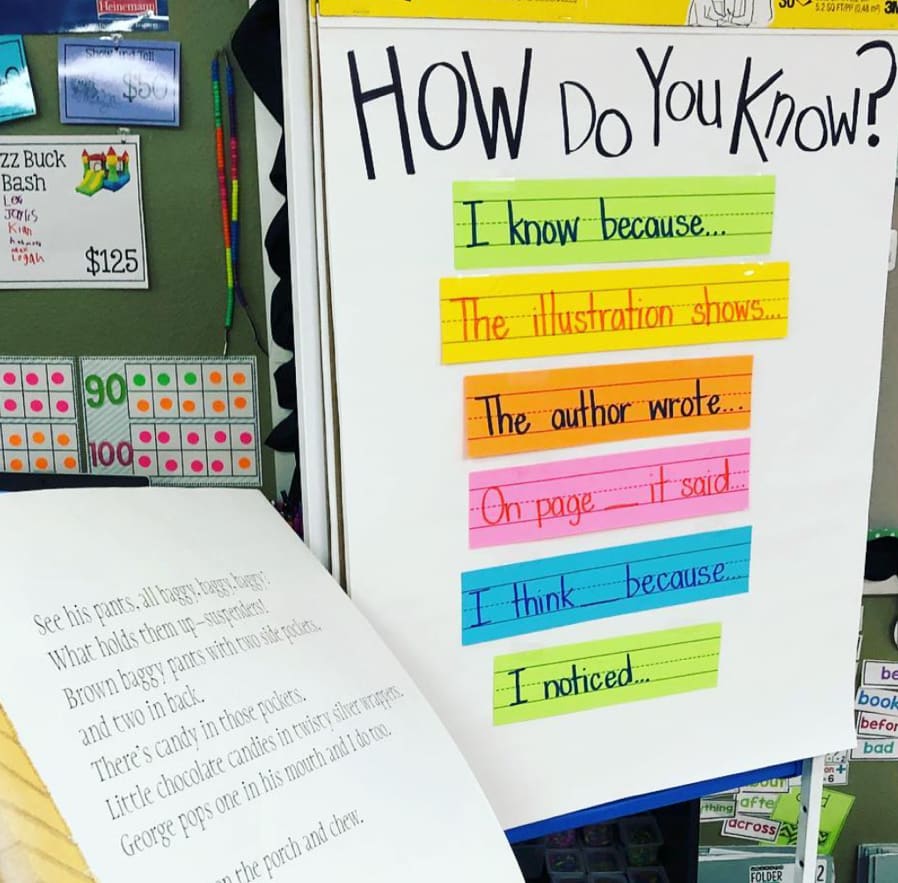
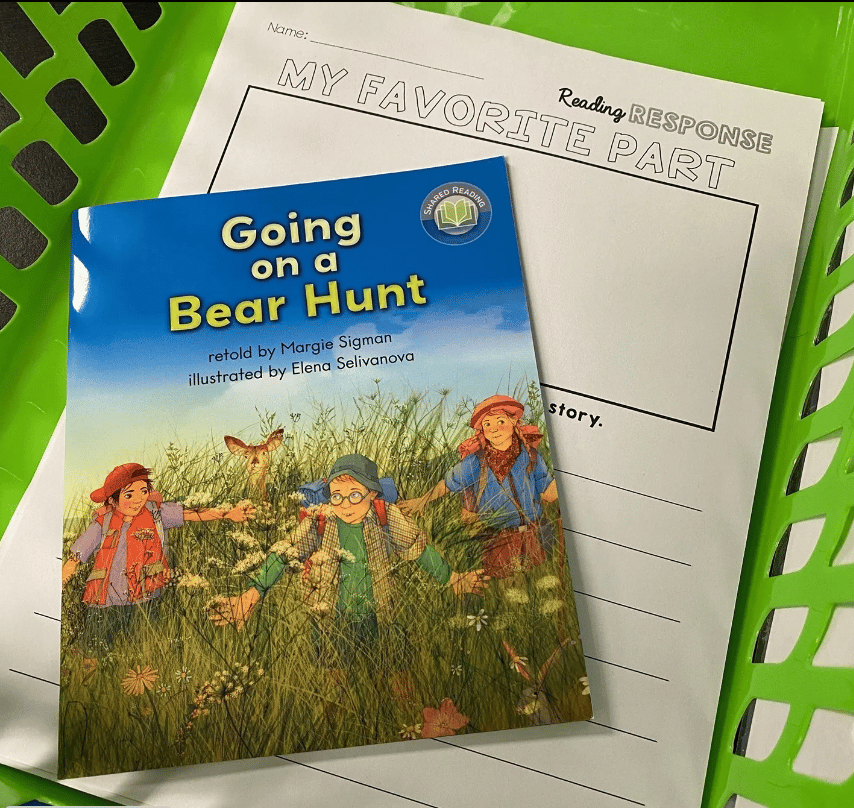
Step 2: Understand How to Measure Your Comprehension Skills
From here, you can designate or create an assessment that will drive all of the mentor texts, lessons and activities for that specific reading skill.
When determining an assessment, you should answer the following questions:
- What do I want my first grade students to know?
- How will I know if they know it?
This is probably something you’ve heard called “backwards design”.
Basically, you want to make sure everything you are teaching is INTENTIONAL and aligning with your first grade teaching standards.
Let me also just take a minute to say that this does NOT have to be super formal!
Reading Response pages are an excellent way to measure comprehension skill.
You can also go as informal as a “comprehension conversation” (aka just talk to your students about the text and ask them comprehension questions).
Step 3: Reading Comprehension Activities and Lessons
There are ALL sorts of different comprehension lessons and activities that you can plan for first grade. There’s really no one perfect solution, your best bet is to expose students to that comprehension skill in a variety of ways.
In this section, I will break down all of the different activities I use in my own classroom to expose students to the chosen comprehension skill including:
- mentor texts
- comprehension focus questions
- sentence stems and questions to ask
- whole group
- anchor charts
- non text activities
- independent activities
- station activities (& creative writing)
- digital activities (videos, pixar wordless videos, google slides lessons and digital stations)
Reading that list might seem incredibly overwhelming, but here’s a tip:
RE-PURPOSE EVERYTHING!
You’ll notice as I go through these activities that I use the same activities for my whole group and then repurpose it into a station activity, etc.
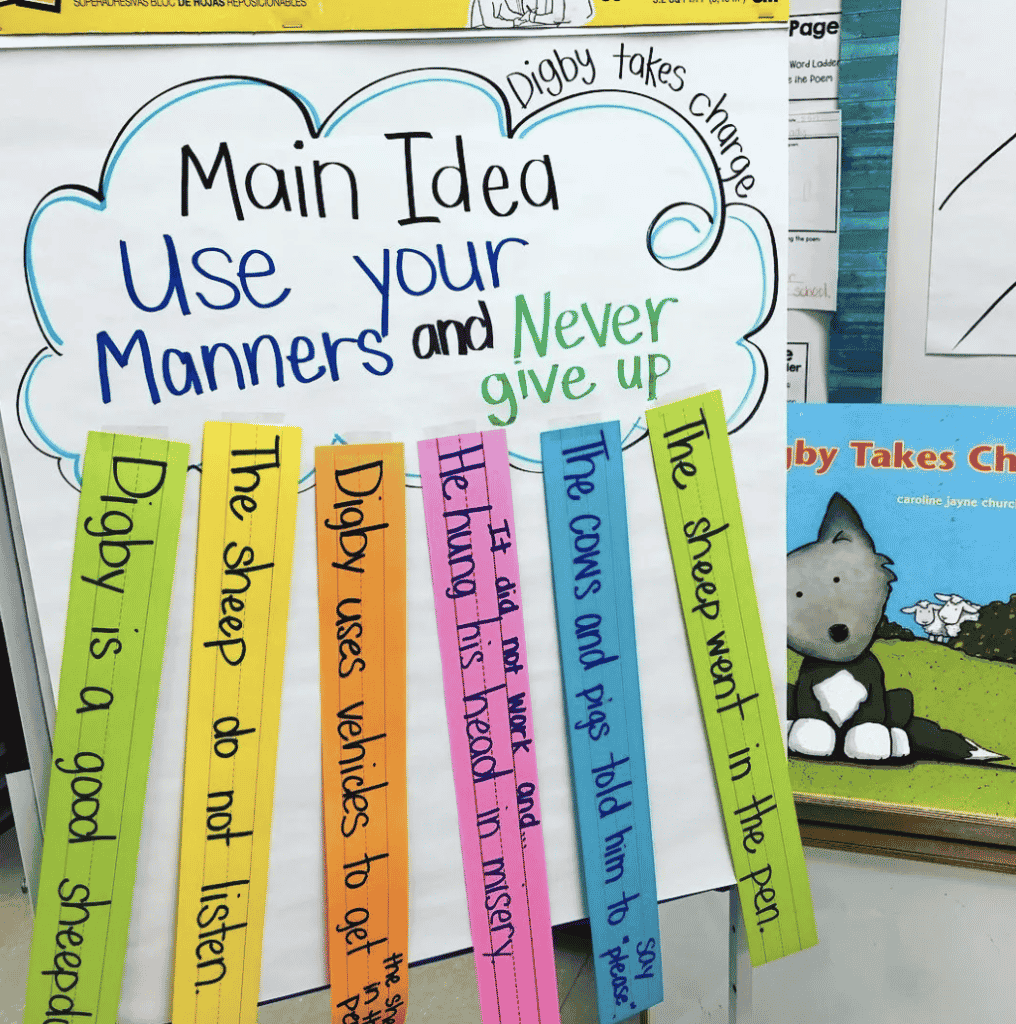
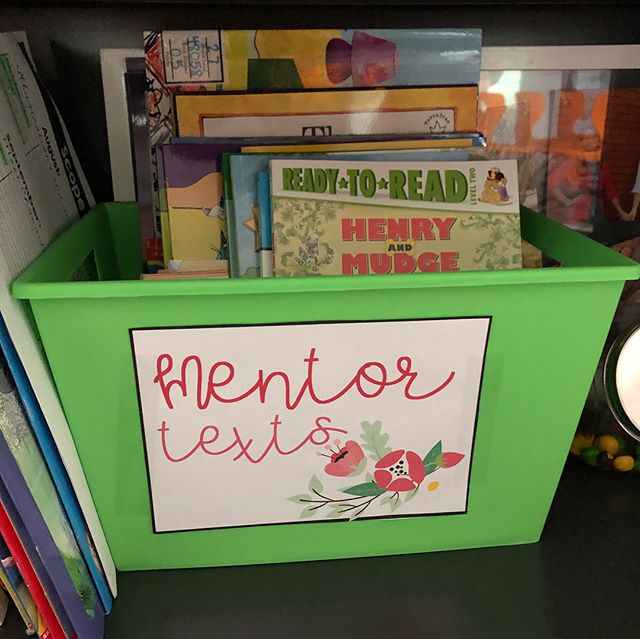
Myths about Mentor Texts
Let’s take a minute to dispel any myths you might have heard about mentor texts.
A mentor text is NOT a book that you read once and put it away.
A mentor text is a book that you read once, then refer back to again and again and again.
The greatest benefit of a good mentor text is that after you have read it once, when you refer back to it, you aren’t reading the entire book again, you are simply referring back to one or two pages.
It will save you SO much time.
AND students are already familiar with the story line meaning that already have a foundation for whatever comprehension skill you are about to dive into!
Comprehension Focus Questions
A Comprehension Focus Question (CFQ) is a very focused and intentional comprehension goal for an activity, a week or even a unit.
If you have done your research and you understand your learning standard, the vocabulary and what students need to know…
Then it becomes very easy to choose a goal (or a comprehension focus question).
But, why do you need a comprehension goal?
To stay FOCUSED!
Not just for you, but for your students also!
Let’s look at an example. Let’s say that this week you are focusing on how to make an inference. Well, there are about a hundred different ways you can make an inference and a CFQ allows you to focus on one area at a time.
Example CFQ: “How Did The Character Change From ___ To ____?”
In this comprehension focus question, you and your students are focusing in on the characters of the story.
The great thing about CFQ’s is that the next time you pull out this mentor text, you can choose a different CFQ to focus on while still practicing how to make an inference!

Sentence Stems for Comprehension
Another great strategy that falls right in long with mentor texts and comprehension focus questions is sentence stems.
A sentence stem is a phrase that your first grade students will use to answer a comprehension question.
Sentence stems are designed to get students to answer comprehension questions more fully rather than giving one word answers.
Sentence stems encourage students to explain their thinking.
I like to have a list of sentence stems next to my table that are specific to each comprehension skill. I stick to one or two stems per skill for the entire year because I want my students to be consistent. (This also makes it a lot easier for them)
If we are sticking with our Make an Inference example, I would use the following sentence stems:
I Think ___ Because____.
I Read This ____ So I Think _____
More Whole Group Comprehension Activities
Besides reading good mentor texts (which I do every single day), my two go-to whole group comprehension activities are anchor charts and non-text activities.
Anchor Charts
I’ll keep this short and sweet.
Anchor charts should be built WITH your students. I am totally on board with drawing out part of it ahead of time and having an idea of where you want to go. BUT showing students a pre-made poster is totally against the concept of “anchoring” their learning.
Also, don’t be afraid to “share the pen” with your students whenever possible. Even if you write out a sentence and have one student write one word to fill in a blank.
Students will be much more invested in your anchor charts.
Non-Text Activities
Non-text activities might be an idea you haven’t heard of yet, and if you haven’t, you are definitely missing out.
Think of it this way, if you were a football coach, would you throw your players into a scrimmage on the first day of practice, or would you run drills to practice tackling, etc. BEFORE playing against each other?
You would definitely run individual drills first!
Non-text activities follow the same concept.
These are activities that practice a comprehension skill that do NOT involve a book. These are often station or small group activities, but it can be very POWERFUL to practice them as a whole group BEFORE you try to apply those skills to a book.
The best part about this strategy is that it is VERY easy to move these activities into a station when you are done with them!
Comprehension Stations & Creative Writing for First Grade
As I just mentioned, whatever reading comprehension activities we practice together ALWAYS goes into a station for the next week.
Whether it’s station activities or a book with a reading response page, station activities should be able to be completed independently.
My challenge to you is to find a way to tie in creative writing. Have students use the book’s character in their own writing or retell the story with a different setting.
Combining your comprehension with writing activities will not only help students better understand the concept, it will also save you time in your day by combining your reading and writing time!
Digital Comprehension Activities for First Grade
Ok, please don’t stop reading… but the reality is, we need to meet our students where they are at!
And our students LOVE digital activities and videos!
My favorite kind of digital activity is Pixar Short Films.
Most Pixar short films are wordless which really makes our students focus and apply their comprehension skills to understand what’s happening.
And even more important, these videos are things they can relate to (hello, background knowledge).
If you haven’t tried Pixar Shorts yet, they are super easy to find on YouTube! You can also type in “Pixar + (comprehension skill)” on Pinterest and a tons of options will pop up!
I’m also going to throw in a plug of using interactive slideshows with your first graders. These aren’t the typical read-from-a-powerpoint type of activity.
Here’s my top tips for using slideshows for first grade:
- Keep it short
- Give an opportunity for practice
- Make it interactive
- Convert it into a station
- Repurpose it for intervention
You can read more about it here:
Reading Comprehension Activities for First Grade
Everything you read about in this blog post..
has ALREADY BEEN CREATED!
Just for YOU!
Reading response pages, interactive slideshows, comprehension focus questions, sentence stems….
Save yourself time and headaches…
Build a strong foundation of comprehension for your students…
And you can save TONS by purchasing the year long bundle!
What are you waiting for?


